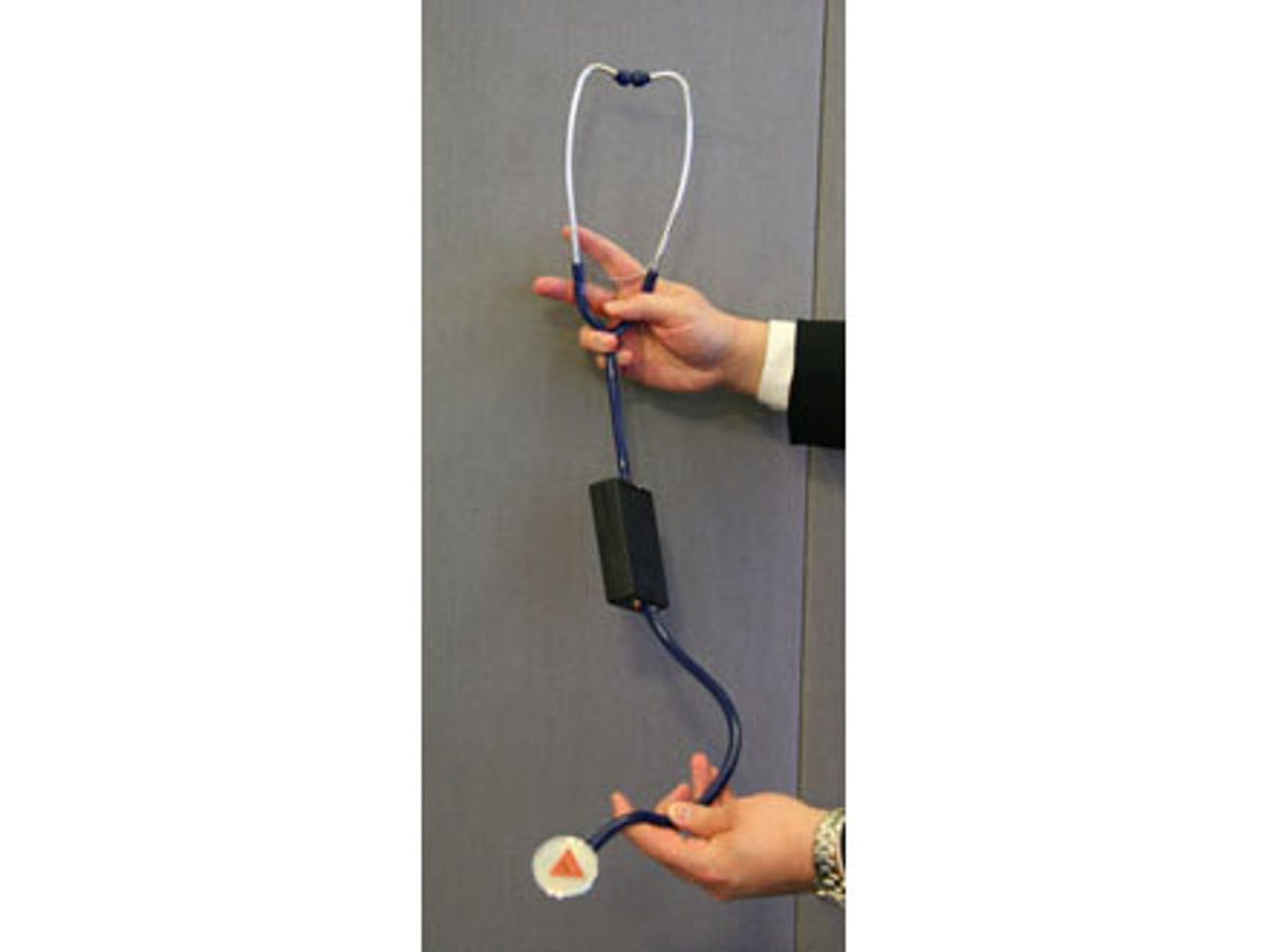Photos: Telstra visits the doctor


According to Edward Simmonds, Alcatel-Lucent's applications business development director, traditional stethoscopes are 20 years old and haven't seen much evolution. Diagnosis using analog stethoscopes is "very subjective", he said, with the older models making it difficult to filter out ambient noise.
This Alcatel electronic stethoscope measures heart readings and also picks up ambient sound readings using a microphone. These are sent via Bluetooth — the blocky device in the centre enables the Bluetooth — to a device, PC or mobile, which sends the reading to a database. The database then filters out the ambient noise from the heart readings which then can be projected onto a screen, allowing doctors to "see" the beats.
This is a heart reading being transmitted from the stethoscope to an IP telephone. The reading can be recorded and stored for future reference.
Alternatively, doctors can analyse the reading using software. The top graph shows the spectroscopic reading, with the colours representing the energy within the frequencies of the heartbeat.
On the top right-hand side of the screen — the anatomical picture of the heart — doctors can record which part of the heart they were listening to when recording the reading.
Patients can take their own blood pressure readings which are fed via Bluetooth to a mobile phone and sent to a database, which the patient and their medical practitioner can access.
Even glucose readings can be sent via Bluetooth to the mobile.
On their mobile, patients can enter what time of day the reading was taken, whether they exercised and other factors before sending the reading off to the database.
Alcatel is also working on monitoring for aged care. While this device looks like a panic button, it links via a mobile phone network to a call centre when pressed. The elderly person can then talk to the call centre about their problem, or if they don't speak after pressing the button, an emergency call is made.
It can also be set to monitor when the person steps out of set boundaries, which is especially useful for patients with dementia. The mobile device is also in a bracelet form.
If the patient feels the need for some one-on-one chat, software installed on a set-top box enables video calls to the call centre and to other people such as their children.
Other forms of aged care monitoring do not require the elderly person to carry anything around with them. QuietCare monitors people in their home via five to eight of these sensors (left) placed around the house. They measure elements such as motion in rooms, or room temperature. The information is sent to a home base station (right) which every few hours passes information on to a centre. Algorithms work out if the person is doing anything out of the ordinary.
In the centre, many patients are monitored using a traffic light system. If a patient goes to the bathroom five times a night instead of the usual two times, a light could for example show amber, as a warning.
The information can also be sent to a PDA, as seen above.